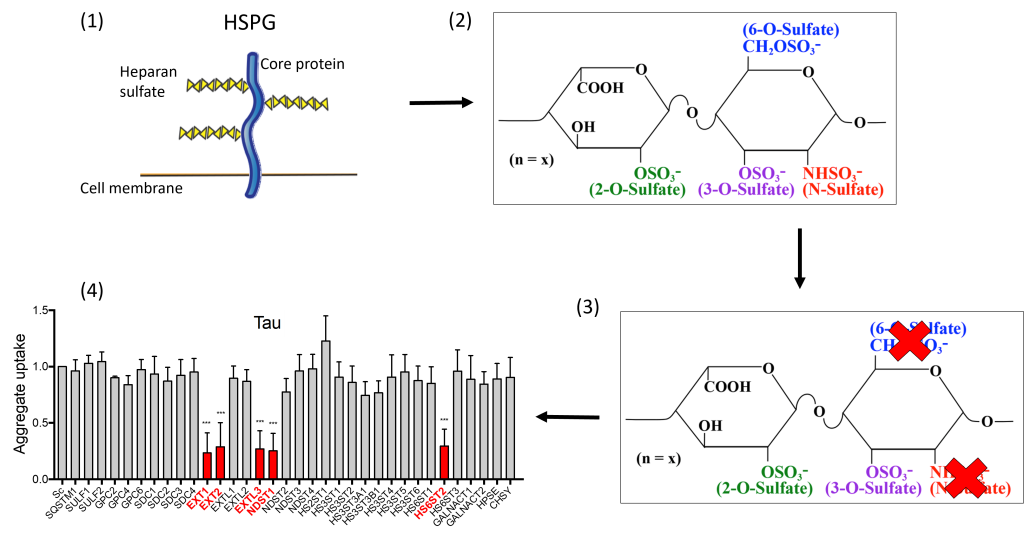Current Featured Projects
Alzheimer’s disease and other tauopathies are devasting and progressive neurodegenerative disorders without available therapeutic options to halt or cure the disease. The prion model of tau propagation predicts that tau seeds are released from cells and taken up by neighboring cells, thus propagating throughout the brain. This process is regulated by a specific sulfation pattern of heparin sulfate proteoglycans (HSPGs) on the cell surface. Other receptors may also play a role depending on cell type, tau conformation, and multiple other variables. We use protein biochemistry and cell and mouse models to understand the exact molecular mechanisms of tau uptake and propagation, to inform the design of new therapeutic approaches.

Caption of above: N-sulfate moieties and 6-O-sulfate moieties on heparan sulfate proteoglycan (HSPG) receptors are critical for tau uptake in cells.
- Schematic of HSPG with core membrane protein (blue) and polysaccharide side chains (yellow) called heparan sulfate.
- Polysaccharide side chains consist of disaccharide units with defined sulfate moieties.
- Sulfate moieties can be removed by knockout of sulfotransferases.
- Tau aggregate uptake is significantly reduced in cells with knockout of heparan sulfate extension enzymes (Ext1, Ext1, EXTL3), N-sulfotransferase (NDST1) and 6-O-sulfotranferase (HS6ST2).
Published in Stopschinski et al., JBC 2018.
Immune dysfunction and neuroinflammation have been proposed as critical triggers of pathology in Alzheimer’s disease and other tauopathies. Microglia, the CNS-inherent phagocytic cells of the immune system, are a well-described neuropathological feature of tauopathies. More recent data suggests that other components of the immune system, including peripheral myeloid cells, may contribute to neurodegenerative processes in the CNS. We use cell and mouse models to study inflammatory pathways and immune cell types that drive the initiation and propagation of tau aggregation. We are collaborating with the Stuve laboratory here at UTSW, which has long-standing expertise in mouse models of autoimmunity in multiple sclerosis.